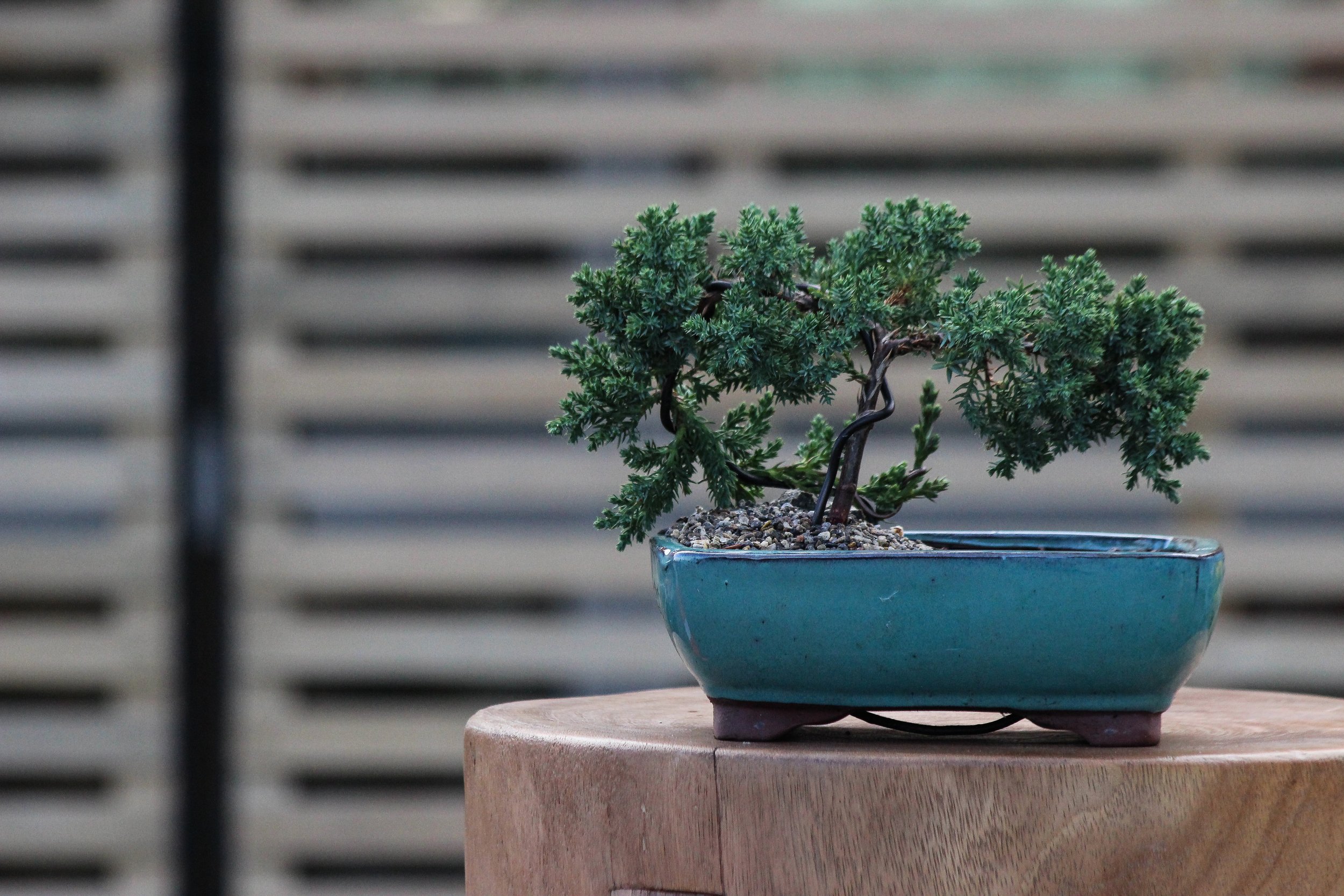Bonsai Guides
What is Bonsai?
Bonsai (pronounced bone-sigh) is an ancient oriental horticultural art form. The word Bonsai literally means, in both Chinese and in the Japanese language, tree-in-a-pot. Originally developed in the Orient almost 2000 years ago, today the sublime art of bonsai is practiced throughout the world. Shape-harmony-proportion-scale are all weighed carefully as art, and the human hand combines this in a common cause with nature.
A tree planted in a small pot is not a bonsai until it has been pruned, shaped, and trained into the desired shape. Bonsai are kept small by careful control of the plant's growing conditions. Only branches important to the bonsai's overall design are allowed to remain and unwanted growth is pruned away. Roots are confined to a pot and are periodically clipped. Bonsai may have a stylised or an exaggerated form ... but, as found in nature. The appearance of old age of a plant is much prized and bonsai may live to be hundreds of years old. The living bonsai will change from season to season and from year to year requiring pruning and training throughout its lifetime ... and as time goes on it will become more and more beautiful.
It is impossible to write a simple set of care rules. Every species of plant has it's own special needs. Each location and environment is different too, and have to be considered. Therefore it is important, when starting in bonsai, to read all you can on the art. Take advantage of your local bonsai club.
General Bonsai Guide
To give you an idea on how to care for your Bonsai plant
Juniper Bonsai
A guide on the Juniper bonsai by Sally Humphreys of Bonsai Chinchaku
This introduction to the art of bonsai was written by Connie Todd and
has been provided through the courtesy of The Iowa Bonsai Association.









